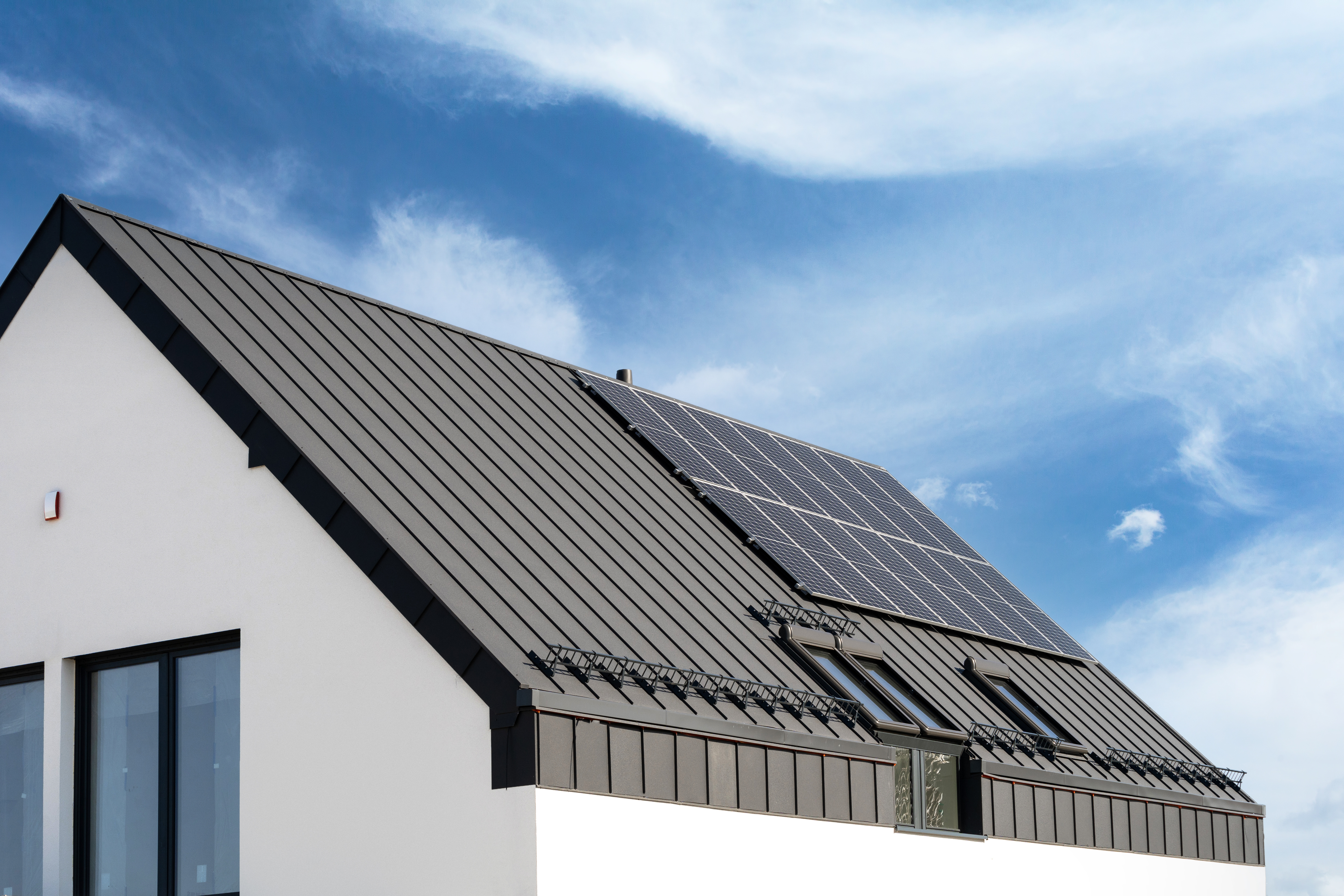
A metal roof can defend your home against Ohio’s varying weather conditions. Learn how much a metal roof costs in Columbus, OH.
The “shingle” life isn’t for everyone
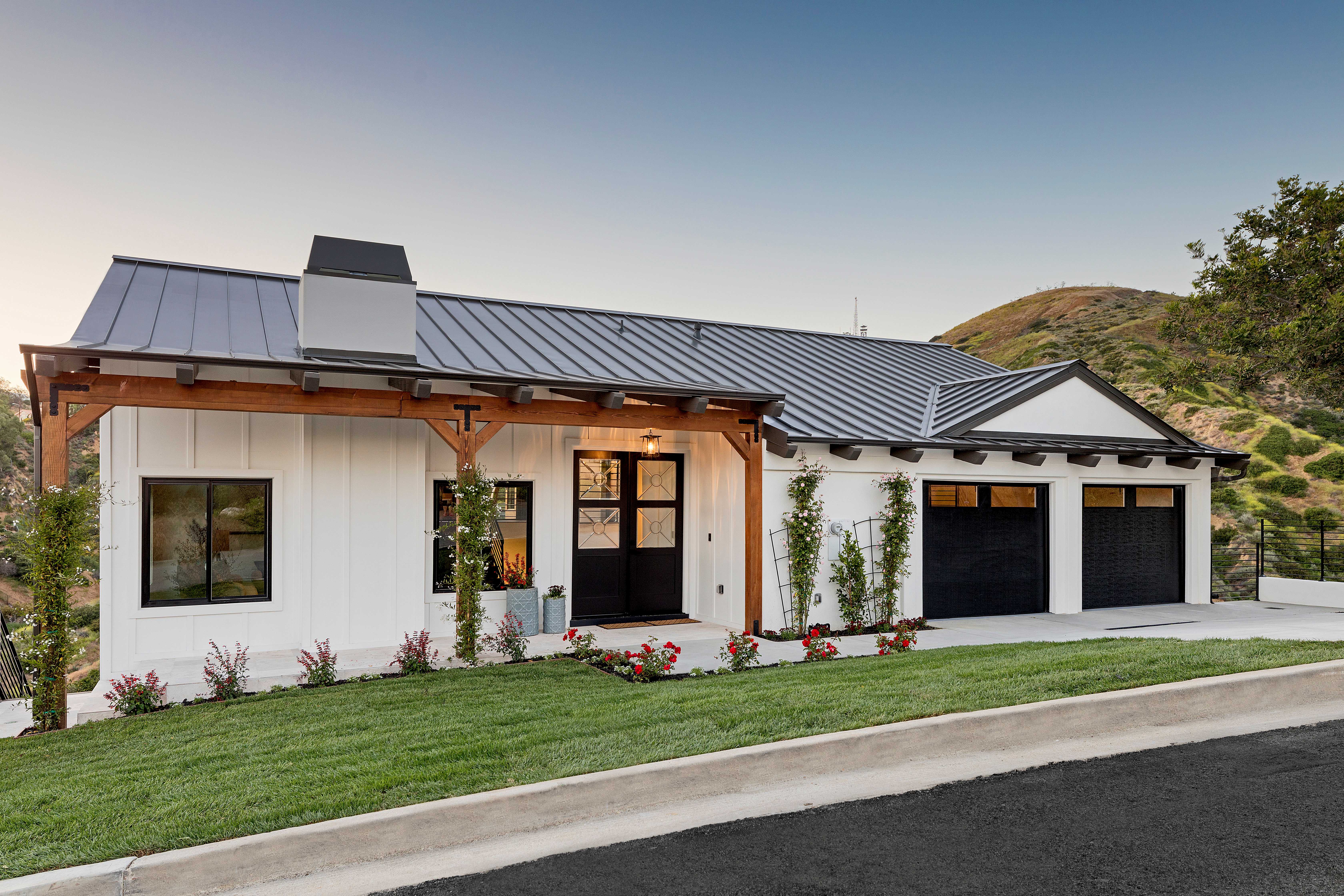

A standing seam metal roof features vertical metal panels with raised seams and hidden fasteners, creating a sleek, modern look.
The main types of standing seam panels include snap-lock, mechanical lock, batten cap, and nail flange.
This roofing style offers durability, energy efficiency, and low maintenance, but comes with a higher up front cost and complex installation.
Most people obsess over siding, paint colors, or front porch details, but the roof—it’s often an afterthought. That’s a missed opportunity, especially if you’re aiming for a modern look with longevity. A standing seam metal roof isn’t just durable and low maintenance. It can completely transform the style of your home, giving it a cleaner and sleeker edge. Whether you’re building from the ground up or replacing an aging roof, standing seam metal roofing is worth a closer look. And it’s not just about looks either. There’s a lot of function packed into those vertical lines.
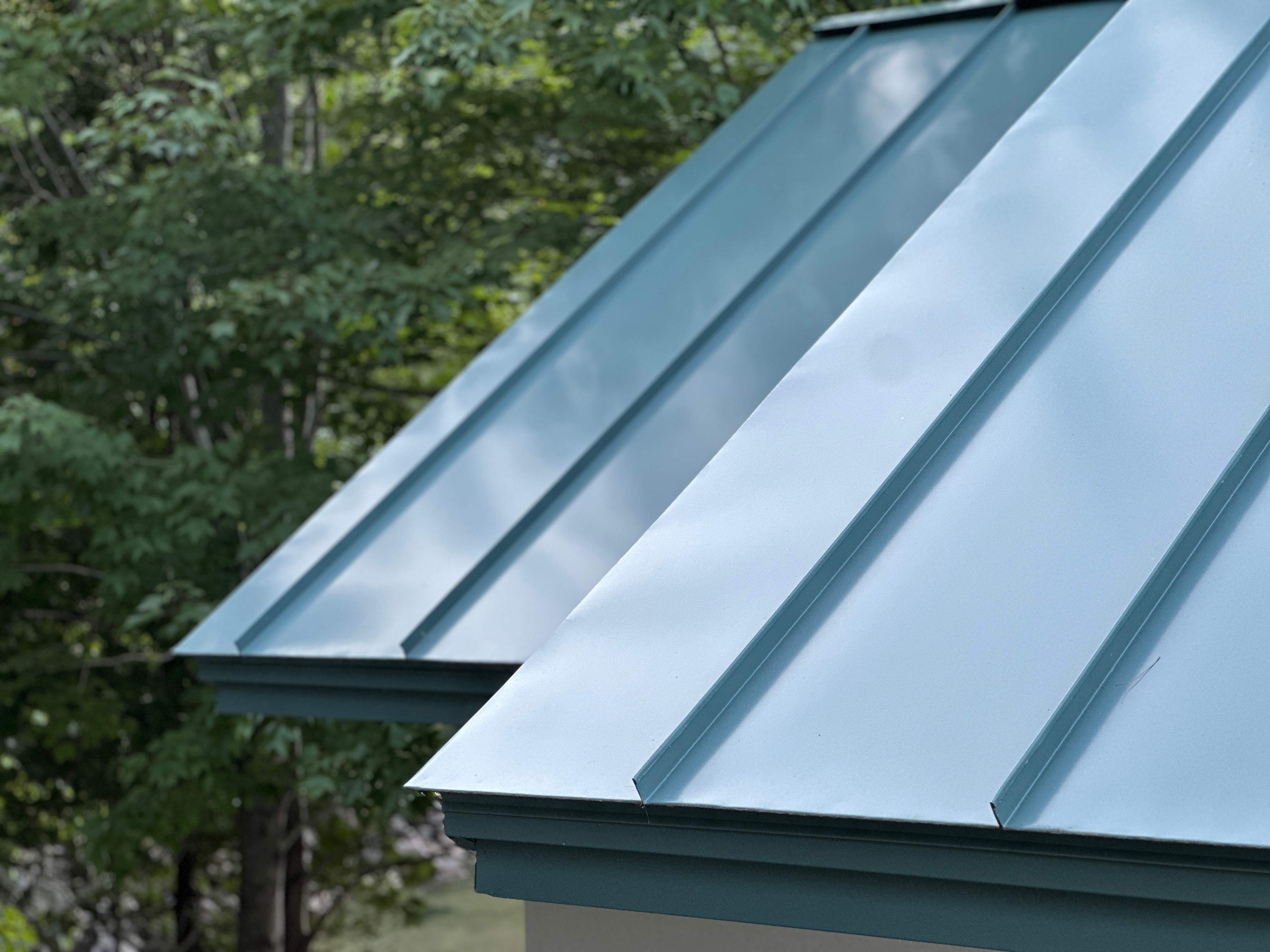
A standing seam metal roof features wide, vertical metal panels with raised seams that run from the top of the roof (or ridge) to the edge. The panels are usually made from coated steel, aluminum, or copper, which means they’re built to last and resist fading and rust. Additionally, the seams aren’t just a design choice. They actually hide the fasteners underneath, shielding them from the elements and helping the roof keep its smooth, modern appearance. Since the fasteners are hidden, the roof expands and contracts more freely and effectively with temperature changes, reducing any long-term wear.
Compared to exposed-fastener systems, this setup requires less maintenance and offers a more refined look. So, if you’re exploring different types of metal roofs, standing seam is one option homeowners tend to go for when they want durability without sacrificing style.
Standing seam and metal shingles bring different styles and strengths to your home, even though they’re made from the same durable material. Often compared because they’re two popular options in metal roofing, both offer longevity, energy efficiency, and a major step up from traditional shingles.
Again, standing seam metal roofs feature clean vertical panels and hidden fasteners, offering a sleek, modern look and significant longevity—often lasting 50 years or more. Designed to resemble wood shakes or asphalt, metal shingles are more traditional and tend to be easier (and slightly less expensive) to install. Both options are durable and low maintenance, but they perform a bit differently over time. Standing seam roofs handle lower-pitched roofs better and expand and contract with temperature shifts, which may require occasional monitoring. Shingles, while stable, can loosen slightly at the interlocking points if not installed carefully.
Ultimately, the choice depends on what fits your home’s style and how much flexibility your roof design demands. Either way, you’re getting a long-lasting upgrade over standard roofing.
Standing seam metal panels all share the same core design: concealed fasteners and vertical seams. But the way those seams are formed—and how the panels attach to the roof deck—can vary quite a bit. Some systems are designed for quick installation, while others are engineered for harsh weather. The type of panel you choose affects not just durability, but also how the roof looks and behaves.
Snap-Lock: Features interlocking panel legs that snap together without special tools. Panels attach to the roof deck with hidden clips, making it a popular choice for homes and faster installations.
Mechanical Lock: The panels are secured with clips and then locked together using a seaming tool for extra strength and weather resistance.
Single-Lock: One fold at 90 degrees. Offers a balance of flexibility and durability.
Double-Lock: Two folds at 180 degrees. Provides a tighter, more secure seal, ideal for low-slope roofs or severe weather.
Batten Panel: This type of panel uses separate batten caps that cover raised panel legs, creating bold, defined seams. It is often chosen for traditional or historic architecture.
Nail Flange: Panels are fastened to the roof deck through a built-in flange. This method is quicker to install and more budget-friendly, though it allows less movement and can have more aesthetic issues.
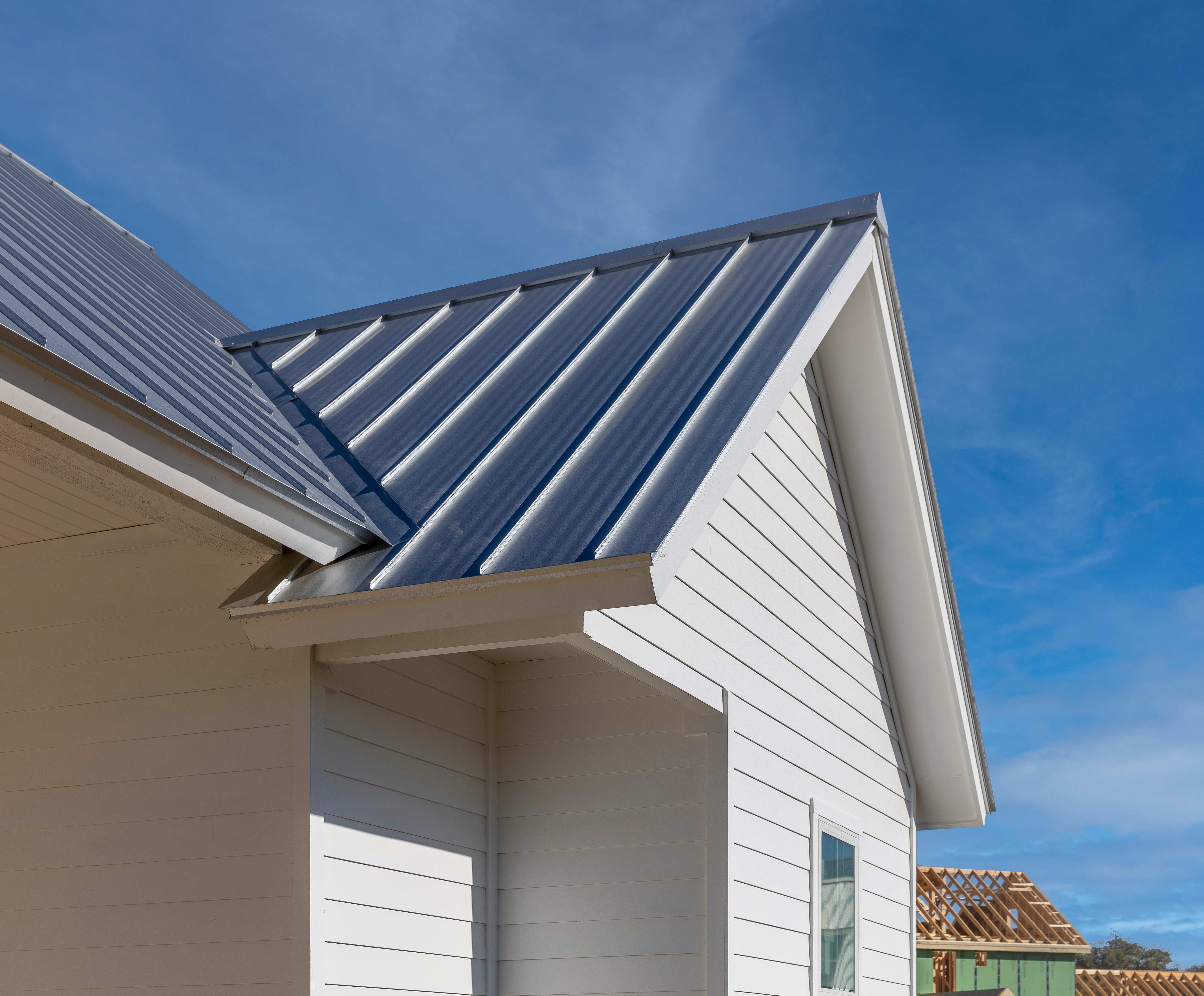
Standing seam metal roofs manage to make a quiet statement without being too flashy. With their signature vertical lines and hidden fasteners, they’ve been a go-to for modern homes, but they’re just as “at home” on cabins, barns, or anything with a tricky roofline. Beyond the aesthetics, there are strong reasons why homeowners choose metal roofing like standing seam—along with a few considerations that might make them pause.
Standing seam metal roofs check a lot of boxes for homeowners looking for longevity, performance, and curb appeal. Defined by their smooth and streamlined design, these roofs are built to handle decades of weather with minimal maintenance. The interlocking panel system creates a weather-tight seal that resists leaks and stands up to extreme conditions. Standing seam roofs are highly adaptable too, working well on everything from low-slope and complex rooflines to cabins, modern homes, and commercial buildings. Additionally, many of these roofing systems are compatible with solar panels, meet energy efficiency standards, and come backed by long-term warranties.
Pros
Long lifespan
Low maintenance
Fits complex roof lines
Energy efficient
Modern, clean appearance
Strong manufacturer warranties
There’s no getting around it—standing seam roofs are an investment. Between material cost and the need for specialized labor, they usually come in at a higher price point than other options. On average, a standing seam metal roof costs $19,000; however, costs can range from $8,400 to $60,400, depending on size, materials, and roof condition. Installation is precise work, and mistakes can lead to problems like panel shifting or visible warping (known as oil canning). Also, not every neighborhood welcomes the modern look, so HOA restrictions may be a hurdle.
Cons
High up-front cost
Complex, technical install
Risk of oil canning
HOA limitations
Taking on a standing seam metal roof yourself might seem like a smart way to save money, but it quickly gets complicated and risky. This isn’t a weekend project you can master from a few DIY videos. Professionals bring deep knowledge about metal’s behavior, roofing, and crucial details like flashing and seam locking that keep water out. Plus, the specialized tools needed—think seamers, crimpers, and cutters—aren’t your typical toolbox staples and can be expensive.
Most importantly, safety is the biggest factor. Handling heavy metal panels on a steep roof is a risky project; however, professionals come equipped with fall protection and experience to keep things safe. Cost-wise, a misstep can mean ruined panels, leaks, or warping, and will almost certainly void your warranty. When it comes to standing seam metal roofs, calling in a professional metal roof installer isn’t just smart—it’s the best way to protect your investment and peace of mind.
From average costs to expert advice, get all the answers you need to get your job done.

A metal roof can defend your home against Ohio’s varying weather conditions. Learn how much a metal roof costs in Columbus, OH.

Learn about roof replacement costs in Columbus and what factors are at play to budget accurately and make sure you’re getting a fair price.
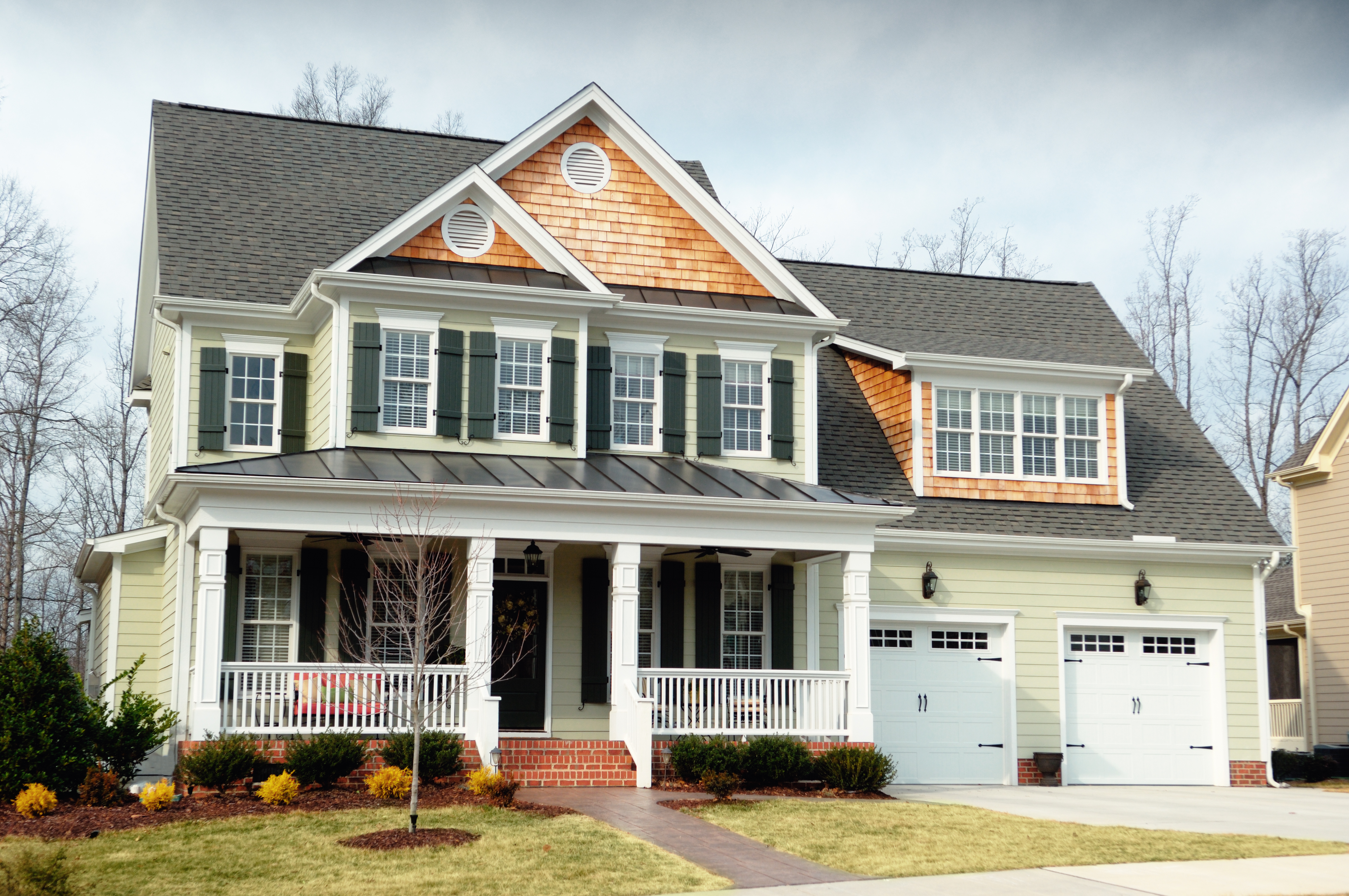
Dealing with a visibly damaged roof or leak? Learn about roof repair costs in Columbus to see how much you’ll need to budget for a permanent solution.

Hiring a reputable roofing company is the key to a safe and long-lasting roof. Here are the top questions to ask a roofer before hiring the best professional.

You may wonder what fascia is on a house. Our guide explains what you need to know about this important part of your roof and what purpose it serves.

What's a cupola? Is it possible to have one on my home? What do they look like? Learn all about the variety of cupolas you can add to your home or barn.